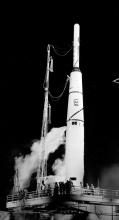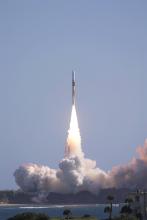Listen to today's episode of StarDate on the web the same day it airs in high-quality streaming audio without any extra ads or announcements. Choose a $8 one-month pass, or listen every day for a year for just $30.
You are here
Moon and Spica
The success of NASA’s Artemis I mission last year means the agency is getting closer to sending astronauts back to the Moon. A crew could land on the Moon within a few years, spending up to a week on the surface. And within a decade or two, astronauts could be spending weeks or months there.
But it won’t be easy. There’s no air, and temperatures range from a couple of hundred degrees above zero to a couple of hundred below, so habitats and spacesuits will need to be airtight and well insulated. And the lunar day lasts about a month, which could mess with a person’s normal day-night rhythm.
There are many other hazards as well. With no protective atmosphere, the Moon is constantly bombarded by small space rocks, which could puncture spacesuits or living quarters. And with no magnetic field, it’s bombarded by radiation from the Sun and beyond. In fact, big solar storms could be deadly.
There are ways to protect the astronauts. Habitats could be buried under dust and rock, screening out most hazards. And spacesuits could be made of materials that are stronger than earlier suits. Scientists and engineers are working to make all of that happen — as astronauts prepare to return to the Moon.
The Moon climbs into good view by 9 p.m. or so. It’s followed a bit later by Spica, the brightest star of Virgo. The Moon will inch closer to the star during the night, and they’ll be just a couple of degrees apart at dawn.
Script by Damond Benningfield





